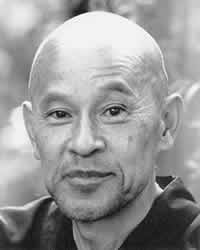1) The first tour in Sept was Rochester Zen Center. We toured our
"Northern Route" in China that stays at Zhaozhou (Joshu)'s monastery,
visits the Second Ancestor Huineng's Dharma seats, and several other
places. I make a point of having all my tours explore something new, and
this tour explored sites near Nanjing that figure into a paper I wrote
about Bodhidharma that offers a new theory about where he lived in China
and what he did there. The sites near Nanjing include his "Nanjing Cave"
and a temple where he reportedly lived for several years that is now an
archeological dig. Among other things, this tour presented special
incense at Zhaozhou's burial pagoda. The incense was made from the roots
of the ancient cypress trees that stood at Zhaozhou's Dharma seat when he
taught. Think ("The Cypress tree in the courtyard").
2) The second tour had 54 people of the Vietnamese Bamboo Grove tradition,
including around 10 abbots and abbesses of their monasteries in Vietnam.
The bamboo grove tradition is now the largest Buddhist group in Vietnam
but it is relatively new, its grand master and founder having started the
group in the 1960s. Now it has 37 monasteries world-wide. They regard
themselves and their tradition as deeply embedded in Chinese Chan, and
they are very familiar and conversant with all the old stories of the Zen
tradition. They feel special affinity for the Third Ancestor Sengsan and
Baizhang as Vietnamese Zen branched from China early on at the dharma
seats of those old masters. We stayed at the Sixth Ancestor's dharma seat,
Nanhua Temple, where we saw the sacred relics of the Sixth Ancestor (his
staff, etc). I gave talks there on Zen history to the group and to monks
of the monastery. We also visited Moshan's dharma seat which is now under
construction toward becoming a great Zen dharma center for women. The
group engaged in 'Dharma combat" with the abbess there, and she acquited
herself wonderfully. We also stayed at Baizhang's dharma seat and temple,
now being rebuilt grandly, plus we visited Mazu's Dharma seat at Baofeng,
Huangbo's old temple, Dongshan, and other dharma seats of importance.
Traveling with this group had special significance as they were the first
large Vietnamese group to ever return to their ancestral places in China
together, at least in modern times.
Between the second and third tours I participated in a grand Dharma
convocation at the Fourth Ancestor's temple as the representative of North
America. It was called the "High Peaks Forum" with more than two thousand
monks. There was also a scholarly forum where more than 100 Zen scholars
from China and Japan participated in a conference that examined early Zen
history with scholarly papers etc. I submitted my paper on Bodhidharma and
it was well received.
3) The third tour was composed mainly of Dharma Rain ZC members from
Portland. It visited many of the southern China Dharma seats that the
Vietnamese tour visited. While at the Fourth Ancestor's Temple it ascended
a nearby mountain to visit the "Lu Reed Flower Nunnery," an incredibly
picturesque nunnery in a fantastic mountain setting - tucked in a valley,
where the nuns garden and practice. This tour was the first American group
to ever visit Zen Master Huangbo's burial stupa - in a place hidden in the
woods of Southern China. It also visited Tiantong and Ayuwang Temples,
places where Dogen lived and studied in China.
|
 cuke.com
- an archival site on the life and world of Shunryu Suzuki and those who knew
him and anything else DC feels like - originally a site for
Crooked
Cucumber: the Life and Zen Teaching of Shunryu Suzuki - not crookedcuke.com
cuke.com
- an archival site on the life and world of Shunryu Suzuki and those who knew
him and anything else DC feels like - originally a site for
Crooked
Cucumber: the Life and Zen Teaching of Shunryu Suzuki - not crookedcuke.com cuke.com
- an archival site on the life and world of Shunryu Suzuki and those who knew
him and anything else DC feels like - originally a site for
Crooked
Cucumber: the Life and Zen Teaching of Shunryu Suzuki - not crookedcuke.com
cuke.com
- an archival site on the life and world of Shunryu Suzuki and those who knew
him and anything else DC feels like - originally a site for
Crooked
Cucumber: the Life and Zen Teaching of Shunryu Suzuki - not crookedcuke.com